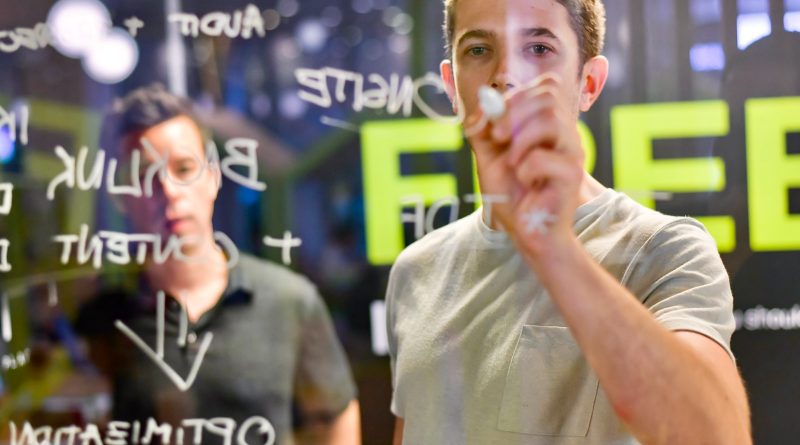Creativity and SEO Positioning
The relationship between creativity and SEO positioning is becoming increasingly intense every year. SEO is one of the disciplines that has evolved the most, and SEO specialists are among the professionals who have transformed the most in the field of digital marketing. There is no doubt that the integration of SEO with other disciplines is increasingly greater, and with this, it has ceased to be exclusively a technical work, to find spaces where creativity and lateral thinking are key to rank above the competition.
Let’s not fool ourselves, the basis of a SEO’s work is the analysis and arrangement of a site’s structural aspects, and their day-to-day moves between response codes, indexability, meta-tags, and crawlers. Their work has an important mathematical-statistical component, essential to understand the effects of what we are doing: visits, dwell time, bounce rate, inbound links, load speed, conversions… also there is the more code-technical part: optimization of tags, titles, URLs, web structure… however, and although it is still far from being called an art, the ability to think out-of-the-box has become a skill that can separate a good SEO from an extraordinary one.
In these leagues, where content quality is assumed, and whichever competitor’s website you visit, you find decent content around brand territories as well chosen as those with which you fight for the same highly coveted keywords. The role of SEO is essential to win this war: diagnosing potential threats, identifying strategies used by the competition, diagnosing traffic changes, and what I defend, creativity in proposals and approaches. That the days of 100% code optimization based SEO gave way to the content era has undoubtedly had a significant influence on the evolution of the SEO profile. But let’s not fool ourselves, we’ve been in the aforementioned era for years now and today, any brand with an acceptable digital strategy has quality content. That is, the recommendation “create quality content and your positioning will improve” has simply ceased to be true in many sectors.
Quality content is essential, yes, but not nearly enough.
If your SEO team is not yet involved in the design of your content strategy and in the selection of topics, you are missing out on web positioning opportunities. If your SEO team is involved but does not have a creative profile, there is nothing that differentiates your SEO work from the competition or from a ChatGPT prompt; only a creative SEO team is capable of finding visits where no one is looking for them, or finding ways to keep the keywords everyone is looking for.
What is a Creative SEO?
There are several points at which SEO work can and should be creative to achieve excellence, and from my point of view, these are the most important ones:
- The most obvious point at which an SEO can bring creativity is in defining content themes. Once the keywords are on the table, the content team can propose themes in which those keywords fit. However, when a SEO is part of that creative process it becomes more efficient, feeding back into the keyword list. Without an SEO specialist in the process, analyzing and validating that feedback, it would be impossible, as no one else can touch the keyword list, under penalty of death.
- The detection of low competition keywords with a high conversion rate, very specific ones. Identifying less obvious situations in our business’s buyer’s journey can become a spectacular Growth Hack. Finding new ways to intercept the user at the end of the purchase decision process can result in a real influx of visits that convert directly.
- Identifying opportunities with brands potentially complementary to ours, which gives us the opportunity to create content by piggybacking on the popularity of that other brand. Or Newsjacking, using the popularity of certain news to generate our own content. This is what is called a Piggy Back Keywords strategy.
- Analysis and conclusions on search intent. If you don’t want to waste time working on keywords that generate a bunch of useless searches, you better have a SEO team that can analyze this intent and distinguish the relevant ones from the irrelevant ones. A bit of creative thinking has proven to be crucial in both discovering new searches and understanding the ones that are on the table.
- Proposing ideas to recycle and take advantage of pages from campaigns that have ended, to leverage the authority of the incoming links gained and not lose them at the end of the campaign.
- When they are on the hunt for incoming links and need to contact Webmasters whom they must convince to link to our page, a bit of creativity and cunning to convince of the value that the incoming link can provide will make a notable difference. Using the same email template to contact webmasters is a strategy doomed to sure failure.
I remember back in the day, during my Digital Agency CEO days, we debated a few times about the statement that creativity is an essential characteristic of a top-tier SEO. Not everyone fully agreed, not even every present SEO did, but we all somewhat agreed. Some SEOs see themselves as the antithesis of creativity. But I know that creativity is behind the success of any project in a highly competitive environment when, coming up with an idea that your competitor didn’t makes all the difference. Including SEO projects.
Let’s not separate creativity from SEO.
